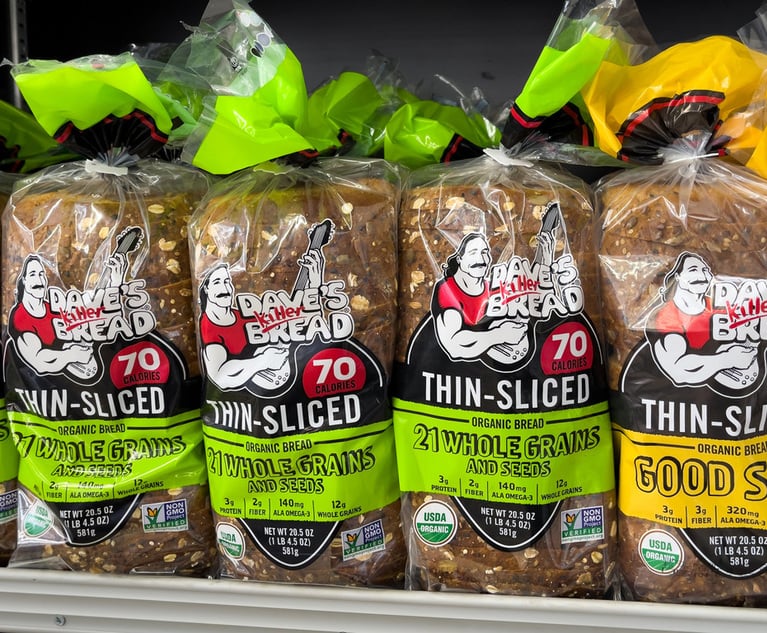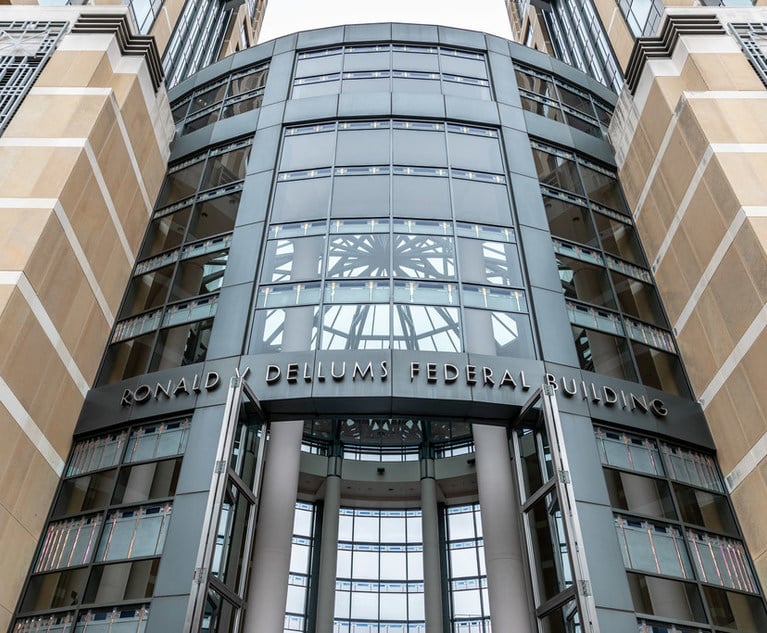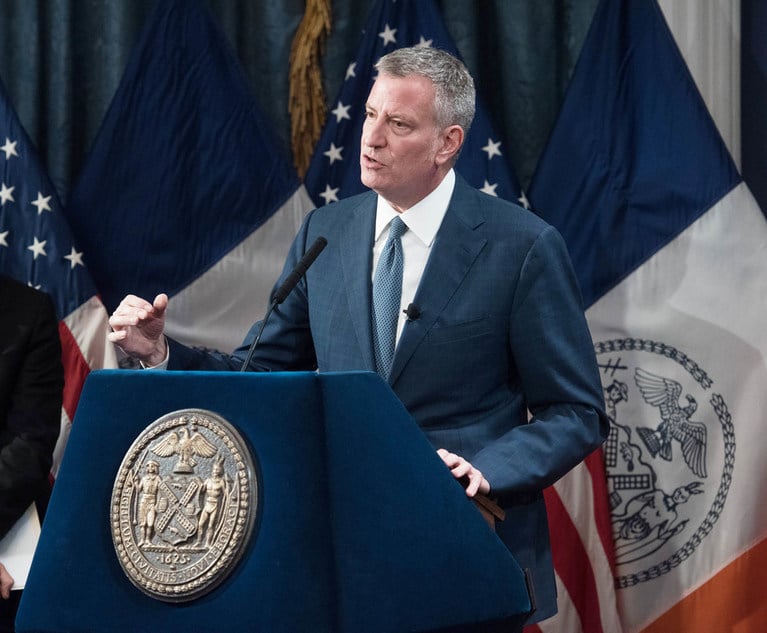Summer Associate Recruiting Holds Steady
New data from the National Association for Law Placement shows that while recruiting is flat, job offer rates are climbing.
March 13, 2019 at 12:03 PM
4 minute read
 Photo: Shutterstock
Photo: Shutterstock
How to describe the summer associate recruiting scene? In a word—stable.
Firms hired law students in similar numbers as the previous three years during last summer's on-campus recruiting season, according to new data from the National Association for Law Placement (NALP). By many accounts 2018 was a record year for large firm profits but that didn't translate into a bump in summer associate recruiting. The latest numbers offer further evidence that summer associate and associate hiring has settled into a “new normal” that falls short of the more robust Big Law hiring practices that predated the recession.
“After a period of great volatility following the recession marked first by a prolonged slowdown in law student recruiting and then a period of rapid escalation in recruiting, we have seen the recruiting market stabilize over the last four or five years,” said NALP executive director James Leipold. “The recruiting climate is most accurately described as steady in 2018, though as with law firm profitability, there remain large differences between individual firms in terms of the number of offers being extended for summer programs and the size of the summer programs themselves.”
Put another way, there's wide variation in how law firms are approaching summer associate recruiting. Nearly half of all law firms—49 percent—reported extending more summer associates offers in 2018 than the previous year, while 40 percent said they extended fewer. The average size of summer associate classes in 2018 remained at 14, yet the most common summer associate class size is one, followed by two. So while some firms still bring in large groups of law students over the summer, many more offices have scaled back to host just one or two. (A quarter of law firms reported bringing in one or two summer associates in 2018, compared with 16 percent in 2008.) Large summer associate programs remain most prevalent in the New York market, according to NALP.
On the upswing are post-graduate job offer rates to summer associates, which hit historic highs last year. Firms reported extending associate offers to nearly 97 percent of 2018's summer associates. Acceptance rates also climbed to 88 percent, up from between 84 and 86 percent the previous seven years.
That high acceptance rate helped tamp down the recruiting of third-year law students, NALP reported, as firms did not need to return to law schools in large numbers to fill gaps left by summer associates who declined an offer to join the firm permanently. Leipold described the 3L recruiting market as “anemic.”
NALP also surveyed law students who participated in on-campus interviewing last summer to gauge their experiences and the factors that drove their decision-making. Students reported that the Vault law firms rankings and input from alumni and classmates were the most commonly cited resources used in choosing which firms to interview with. But office location came in at the top of the list of factors influencing those decisions, followed by firm culture and the strength of particular practice areas.
Students also reported that the attorneys they interviewed with on campus were a major consideration when choosing between summer associate offers from multiple firms. More than 62 percent of students said they considered the people they met during the interview process, followed by the firm's prestige, at nearly 48 percent.
“If there is a takeaway from the student surveys that were completed, it is that who you send to campus really matters,” Leipold said. “At the end of the day, students report that the lawyers they met were extremely influential in students' assessments of where to accept or reject offers of summer employment.”
This content has been archived. It is available through our partners, LexisNexis® and Bloomberg Law.
To view this content, please continue to their sites.
Not a Lexis Subscriber?
Subscribe Now
Not a Bloomberg Law Subscriber?
Subscribe Now
NOT FOR REPRINT
© 2025 ALM Global, LLC, All Rights Reserved. Request academic re-use from www.copyright.com. All other uses, submit a request to [email protected]. For more information visit Asset & Logo Licensing.
You Might Like
View All
Class Action Accusing Dave's Killer Bread of Mislabeling Protein Contents Cleared to Continue, Judge Rules
4 minute read
Miami Judge Approves Shaq's $11 Million Settlement to Resolve Astrals Investor Claims
3 minute read
Crypto Exchange’s ‘Meteoric Rise’ Leads to Nationwide Class Action Trend
4 minute read
Ex-NYC Mayor de Blasio Must Pay $475K Fine for NYPD’s Presidential Campaign Security
3 minute readTrending Stories
- 1‘Facebook’s Descent Into Toxic Masculinity’ Prompts Stanford Professor to Drop Meta as Client
- 2Pa. Superior Court: Sorority's Interview Notes Not Shielded From Discovery in Lawsuit Over Student's Death
- 3Kraken’s Chief Legal Officer Exits, Eyes Role in Trump Administration
- 4DOT Nominee Duffy Pledges Safety, Faster Infrastructure Spending in Confirmation Hearing
- 5'Younger and Invigorated Bench': Biden's Legacy in New Jersey Federal Court
Who Got The Work
J. Brugh Lower of Gibbons has entered an appearance for industrial equipment supplier Devco Corporation in a pending trademark infringement lawsuit. The suit, accusing the defendant of selling knock-off Graco products, was filed Dec. 18 in New Jersey District Court by Rivkin Radler on behalf of Graco Inc. and Graco Minnesota. The case, assigned to U.S. District Judge Zahid N. Quraishi, is 3:24-cv-11294, Graco Inc. et al v. Devco Corporation.
Who Got The Work
Rebecca Maller-Stein and Kent A. Yalowitz of Arnold & Porter Kaye Scholer have entered their appearances for Hanaco Venture Capital and its executives, Lior Prosor and David Frankel, in a pending securities lawsuit. The action, filed on Dec. 24 in New York Southern District Court by Zell, Aron & Co. on behalf of Goldeneye Advisors, accuses the defendants of negligently and fraudulently managing the plaintiff's $1 million investment. The case, assigned to U.S. District Judge Vernon S. Broderick, is 1:24-cv-09918, Goldeneye Advisors, LLC v. Hanaco Venture Capital, Ltd. et al.
Who Got The Work
Attorneys from A&O Shearman has stepped in as defense counsel for Toronto-Dominion Bank and other defendants in a pending securities class action. The suit, filed Dec. 11 in New York Southern District Court by Bleichmar Fonti & Auld, accuses the defendants of concealing the bank's 'pervasive' deficiencies in regards to its compliance with the Bank Secrecy Act and the quality of its anti-money laundering controls. The case, assigned to U.S. District Judge Arun Subramanian, is 1:24-cv-09445, Gonzalez v. The Toronto-Dominion Bank et al.
Who Got The Work
Crown Castle International, a Pennsylvania company providing shared communications infrastructure, has turned to Luke D. Wolf of Gordon Rees Scully Mansukhani to fend off a pending breach-of-contract lawsuit. The court action, filed Nov. 25 in Michigan Eastern District Court by Hooper Hathaway PC on behalf of The Town Residences LLC, accuses Crown Castle of failing to transfer approximately $30,000 in utility payments from T-Mobile in breach of a roof-top lease and assignment agreement. The case, assigned to U.S. District Judge Susan K. Declercq, is 2:24-cv-13131, The Town Residences LLC v. T-Mobile US, Inc. et al.
Who Got The Work
Wilfred P. Coronato and Daniel M. Schwartz of McCarter & English have stepped in as defense counsel to Electrolux Home Products Inc. in a pending product liability lawsuit. The court action, filed Nov. 26 in New York Eastern District Court by Poulos Lopiccolo PC and Nagel Rice LLP on behalf of David Stern, alleges that the defendant's refrigerators’ drawers and shelving repeatedly break and fall apart within months after purchase. The case, assigned to U.S. District Judge Joan M. Azrack, is 2:24-cv-08204, Stern v. Electrolux Home Products, Inc.
Featured Firms
Law Offices of Gary Martin Hays & Associates, P.C.
(470) 294-1674
Law Offices of Mark E. Salomone
(857) 444-6468
Smith & Hassler
(713) 739-1250








